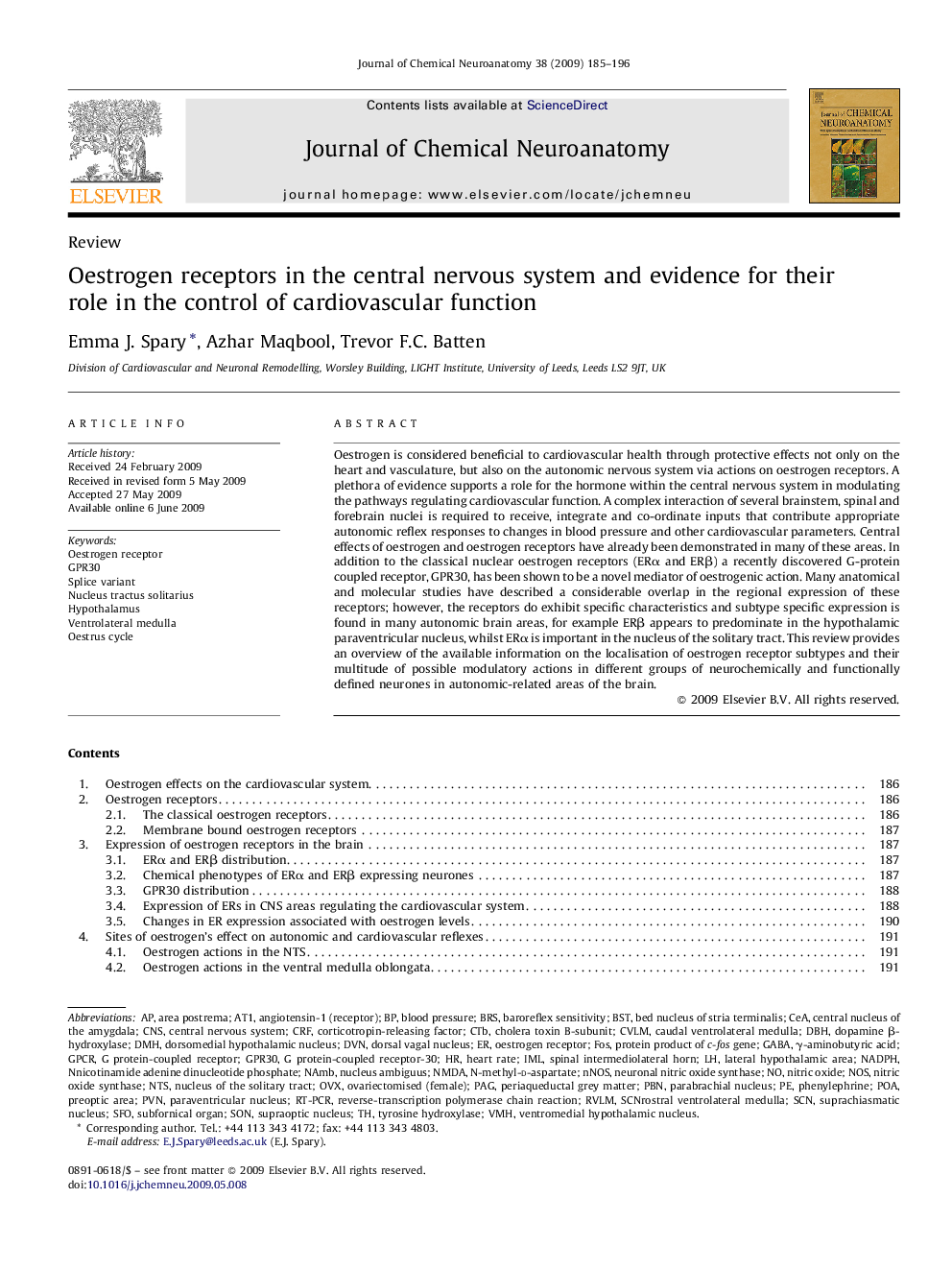| Article ID | Journal | Published Year | Pages | File Type |
|---|---|---|---|---|
| 1989271 | Journal of Chemical Neuroanatomy | 2009 | 12 Pages |
Oestrogen is considered beneficial to cardiovascular health through protective effects not only on the heart and vasculature, but also on the autonomic nervous system via actions on oestrogen receptors. A plethora of evidence supports a role for the hormone within the central nervous system in modulating the pathways regulating cardiovascular function. A complex interaction of several brainstem, spinal and forebrain nuclei is required to receive, integrate and co-ordinate inputs that contribute appropriate autonomic reflex responses to changes in blood pressure and other cardiovascular parameters. Central effects of oestrogen and oestrogen receptors have already been demonstrated in many of these areas. In addition to the classical nuclear oestrogen receptors (ERα and ERβ) a recently discovered G-protein coupled receptor, GPR30, has been shown to be a novel mediator of oestrogenic action. Many anatomical and molecular studies have described a considerable overlap in the regional expression of these receptors; however, the receptors do exhibit specific characteristics and subtype specific expression is found in many autonomic brain areas, for example ERβ appears to predominate in the hypothalamic paraventricular nucleus, whilst ERα is important in the nucleus of the solitary tract. This review provides an overview of the available information on the localisation of oestrogen receptor subtypes and their multitude of possible modulatory actions in different groups of neurochemically and functionally defined neurones in autonomic-related areas of the brain.
